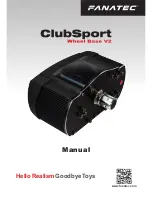
82
MP00000B00 V_2.6
È OBBLIGATORIO RISPETTARE LE NORME CEI EN
60204-1 PER LA SCELTA DI FUSIBILI, CAVI E
INDUTTANZA DI INGRESSO.
È OBBLIGATORIO UTILIZZARE FUSIBILI DEL TIPO
ULTRARAPIDO O RAPIDO.
6.2- SCELTA DI FUSIBILI,
INDUTTANZA DI INGRESSO,
RESISTENZE DI FRENATURA
La scelta delle sezioni dei conduttori e dei fusibili è
stata fatta secondo le norme CEI EN 60204-1,
materiale per conduttori rame, classe di installazione
B1. Tutti i dati relativi alle sezioni dei conduttori e ta-
glie dei fusibili sono solo raccomandati. Vanno rispet-
tate le norme e disposizioni nazionali.
In caso di installazione dell’azionamento (come
convertitore di frequenza) a valle di un trasformatore la
cui potenza sia superiore a due volte la potenza del
convertitore si raccomanda l’installazione di una
induttanza di ingresso in modo da presentare al
convertitore una impedenza uguale o superiore a quel-
la di
TAB. 16
.
DURANTE IL FUNZIONAMENTO LA RESISTENZA DI
FRENATURA PUÒ RAGGIUNGERE TEMPERATURE
ELEVATE.
La scelta dell’induttanza di ingresso deve essere in
funzione della potenza del convertitore di frequenza e
deve essere tale da garantire una caduta minima di
tensione superiore al 3% (Vac/
√
2)*3% alla corrente
nominale assorbita dal convertitore e non deve satura-
re ad una corrente efficace doppia di quella nominale.
Se si usa il dispositivo di frenatura occorre prevedere
una resistenza con valore ohmico tale da non avere
correnti di picco superiori a quelle massime indicate in
(TAB. 18 - par. 5.6)
, in grado di reggere transitoria-
mente una tensione di 800 Vcc (per uso a 400Vac) e
con dimensionamento in energia e potenza superiore
a quanto viene chiesto dal ciclo della macchina; la
potenza indicata in tabella è un
valore minimo
che si
può usare nel caso di frenature poco frequenti e per
macchine con poca inerzia, due tre volte quella del
motore. La potenza della resistenza di frenatura va
dimensionata tenendo in considerazione il ciclo di
lavoro (fasi di decelerazione).
6.2- SELECTING FUSES, INPUT
CHOKE & BRAKING
RESISTORS
The selection of the conductors’ cross-sections and si-
ze of fuses has been made according to CEI EN
60204-1, for copper conductors, installation class B1.
All data on the cross-sections of conductors and size
of fuses are recommended only. National / state norms
and rules must be complied with.
If the drive is installed (as a frequency converter)
downstream a transformer whose capacity is more
than double that of the converter, we recommend
installing an input choke, so as to present the
converter with an impedance equal to or higher than
that indicated in
TAB. 16
.
The input choke (inductor) must be selected
depending on the power of the frequency converter
and should be such as to guarantee a minimum
voltage drop exceeding 3% (Vac/v2)*3% at the rated
current draw from the converter; moreover, it must not
saturate at an effective current of double the rated
current.
If the braking device is used, you will need a resistor
with an ohmic value capable of preventing peak
currents exceeding the maximum permissible ones
shown in
(TAB. 18 - par. 5.6)
, and capable of
transitorily withstanding a voltage of 800 Vcc (for use
at 400Vac), with an energy and power rating excee-
ding the rating required by the machine cycle; the va-
lue indicated in the above-mentioned table is
a
minimum value
that can be used for infrequent bra-
king and for machines with low inertia, equal to two or
three times that of the motor. The braking resistor ca-
pacity must be determined by taking into account the
work cycle (deceleration phases).
ALWAYS COMPLIY WITH CEI EN 60204-1 STAN-
DARDS IN THE CHOICE OF FUSES, CABLES AND IN-
PUT CHOKE.
USE FAST OR ULTRA-FAST FUSES ONLY.
THE BRAKING RESISTOR CAN REACH VERY HIGH
TEMPERATURES DURING OPERATION.
Содержание OPDE
Страница 1: ...Cod MP00000B00 V_2 6 Products Tde Macno Installation OPDE...
Страница 2: ......
Страница 40: ...38 MP00000B00 V_2 6 FIG 8 Collegamenti elettrici Electrical Connections...
Страница 88: ......
Страница 89: ......







































